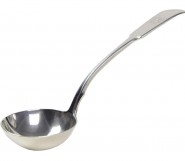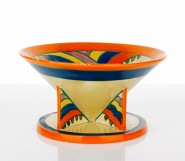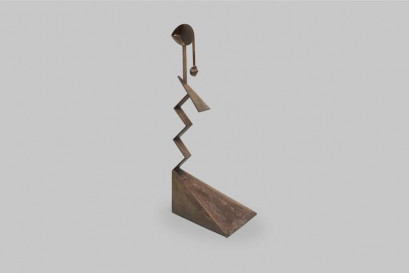Lot #70 - Joel Elenberg
-
Auction House:Bonhams Australia
-
Sale Name:Tony White | The Jeweller's Eye
-
Sale Date:11 Oct 2020 ~ 2pm (AEDT)
-
Lot #:70
-
Lot Description:Joel Elenberg
(1948-1980)
Figure III, 1977
Steel
height: 86.0cm (33 7/8in).
RELATED WORK: Figure II, 1978, serpentine, 104.0cm, in Brett Whiteley, Portrait of Joel Elenberg, 1980, oil and mixed media on canvas, 202.0 x 152.0cm, in the collection of the Art Gallery of New South Wales, Sydney -
Provenance:Robin Gibson Gallery, Sydney; Collection of the Late Tony White, Sydney
-
Exhibited:Joel Elenberg: Stone Carving, Robin Gibson Gallery, Sydney, 10 - 28 October 1978, cat. 16 (illus. in exhibition catalogue, no pagination), illus. on exhibition mailer
-
Notes:In 1977, Arthur Boyd offered the use of his Tuscan farmhouse, Il Paretaio, to Joel Elenberg so that he might further hone his sculptural practice. Together with his wife Anna and young daughter Zahava, Elenberg was to experience a transformative summer. By October of 1978, the resulting works were on exhibition with Robin Gibson Gallery in Sydney. Nineteen sculptures in Black Belgium marble, serpentine, and white statuary marble caused a sensation with Sandra McGrath's review stating that 'Elenberg has most of the Sydney art world eating out of his hand. John Laws told his rapt radio audience to get to the exhibition.' 1 Of that Italian summer, Anna Schwartz gave the following account in 2010, 'After a few days in Rome en route, [...] and the extraordinary achievement of buying a tiny Fiat (with the help of Australians John and Joan Drake who worked with the UN there) and finalising all the necessary documentation in one day, Joel installed himself at Casa Paretaio in the rolling, muscular hills of Toscana. He procured blocks of Carrara ordinario [common marble] and then the prized staturario [statuary marble], transported them to Palaia, and made his first serious pieces in the garden of Paretaio over the summer of 1977. Joel was able to establish very close working relationships with the great artisans at the sculpture studio SGF; these sustained him for the rest of the three remaining years of his life, and his work for much longer. Our little daughter attended the local asilo, pre-school, and learned to speak beautiful Italian. Friendships were established with people in the village. Often the art teacher, the butcher and others occupying the various social strata there would find themselves mingling at dinners and parties at the house. Many friends from Australia came to stay: Brett and Wendy Whiteley; Ross Phillips, a philosopher from La Trobe University; Louis Green, the historian from Monash University specialising in Lucca; and Gary Foley, the Aboriginal activist, were some. We introduced other Australian sculptors to the studios of Carrara: Akio Makigawa, Tony Pryor and Peter Schipperheyn. We had too little money to take advantage of the central heating in the house during winter, and slept on a mattress on the floor in front of the fire of the large downstairs room, previously used to accommodate the animals in the freezing Tuscan winter. We cooked the local game and chestnuts on the fire, and I learned the Tuscan practice of washing the unglazed terracotta floor tiles with milk to give them a lovely sheen. We installed a wire fence around the swimming pool to protect four-year-old Zahava, and bought rose seedlings from Pistoia. Today there is a 30-year-old rose hedge around the pool. It was a beautiful and precious time. The best of Joel's works could not have been made without it.'2 1. Sandra McGrath, 'Marble star', The Weekend Australian, 14-15 October 1978, p. 6; 2. Anna Schwartz interviewed in Bill Kent, Ros Pesman and Cynthia Troup, Australians in Italy: Contemporary Lives and Impressions Monash University Publishing, Melbourne, 2010
-
Estimate:A$18,000 - 25,000
-
Realised Price:
-
Category:Art
This Sale has been held and this item is no longer available. Details are provided for information purposes only.










